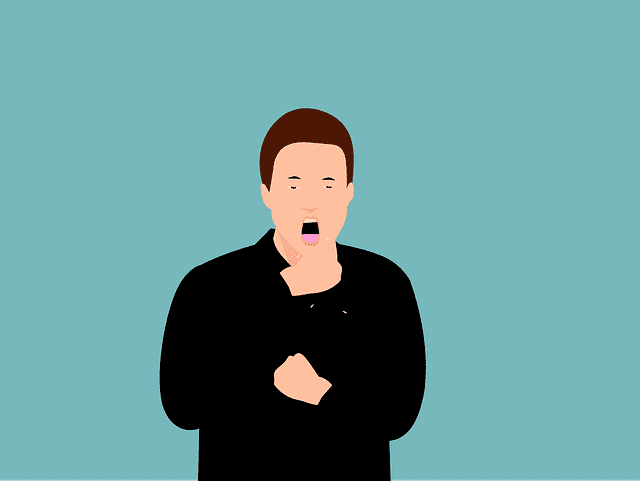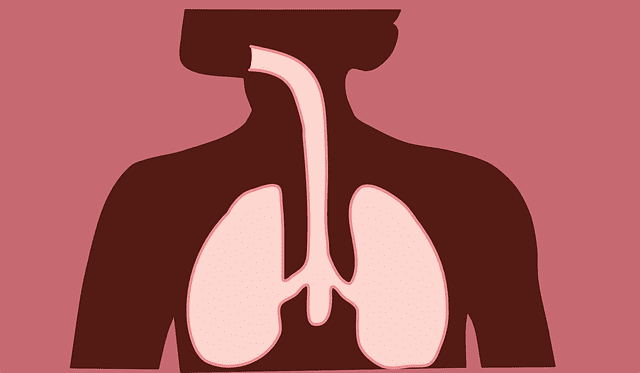What is Respiratory Disease?
Respiratory diseases are diseases that affect the lungs, air sacs, and other organs of the respiratory system in our body. While the most common causes of these diseases are pollution and tobacco smoking, you can also be affected due to certain allergies, nutritional deficiencies, and genetic reasons.
The symptoms usually include:
- Difficulty breathing or shortness of breath
- Heavy cough
- Cough bleeding
- The feeling of difficulty in breathing
- Pain in the chest
- Sore throat
- Blood in the mucus

Seven types of Respiratory Diseases
1. Chronic Obstructive Pulmonary Diseases
If you are a smoker or inhale tobacco in any form, you are most likely to suffer from this disease.
Symptoms
Shortness of breath, wheezing, cough, complications, AIDS, tuberculosis, and lung cancer.
Cause
People who spend a lot of their time in industrial areas where there is irritating gas all around may also get this disease. Sometimes it can also be caused due to genetic reasons.
Also Read: Chronic Obstructive Pulmonary Diseases: Symptoms, Causes, Prevention, and Treatment
Treatment
- Smoking cessation
- Bronchodilator therapy
- Pulmonary rehabilitation: It is a program that focuses on nutritional counseling and teaches you breathing and exercise strategies.
2. Asthma
The condition happens when your airways become narrow due to inflammation. This situation makes breathing difficult and may sometimes lead to producing extra mucus.
Symptoms
Dry cough, tightness in the chest, whistling sound while exhaling, and fatigue.
Causes
- Genes: If someone in your family has asthma, you can have it too.
- Less exposure to bacteria during the infant stage: Some babies are grown in such hygienic conditions that there are no bacteria for their bodies to fight while they are growing up. This weakens their immunity.
Treatment
- Take long-term medications to manage asthma.
- Do breathing exercises.
- Get Bronchodilators through a nebulizer. (Source)
Also Read: Asthma: Symptoms, Causes, Prevention, and Treatment
3. Lung Cancer
Cellular damage caused by inhaling a harmful chemical in the long term can eventually lead to cancer of the lungs. While the tumor begins in the lungs, it can go on to the lymph nodes, bones, brain, and then the liver as well.
Symptoms
Cough, shortness of breath, wheezing, chest pain when you laugh, cough or breathe deep, tiredness, weight loss.
Causes
Exposure to the following in industrial areas:
- Uranium
- Arsenic
- Cadmium
- Nickel
- Chromium
Treatment
Once diagnosed, you must undergo surgery, chemotherapy, immunotherapy, and radiation therapy. These can be done alone or in combination according to the severity of your cancer. You can also add natural treatment options like yoga, acupuncture, hypnosis, massage, and meditation.
Also Read: Lung Cancer: Symptoms, Causes, Risk Factors, Diagnosis, Prevention, Facts
4. Emphysema
Emphysema is a severe form of COPD. It is when the air sacs that are in your lungs get damaged, narrowed, over-inflated, or stretched. It evolves over the years and eventually leads to respiratory failure.
Symptoms
Chronic cough, shortness of breath, wheezing, fatigue, loss of appetite, anxiety, insomnia, and headaches.
Causes
It is no surprise that the most common cause is smoking. Tobacco damages the air sacs to such a level that they are no longer capable of repairing themselves. The other major cause is your genes. If someone in your family has had Emphysema, it is possible you can inherit it too.
Treatment
As mentioned above, there’s no proper cure for Emphysema. However. It can be kept in control with the help of medications.
Here are the medications you can take:
- Bronchodilators (this treatment helps to relieve the blockage by opening up the airways in your lungs). There are two types:
- Beta-agonists
- Anticholinergics
- Corticosteroids
- Lung volume reduction surgery: The surgery helps get rid of the damaged lung tissue.
- Lung transplantation surgery
- Pulmonary rehabilitation: This program helps people with lifestyle management. It helps to:
- Others: Get rid of the habit of smoking, Follow a healthy diet, and Exercise consistently.
Also Read: Emphysema: Symptoms, Causes, Prevention, and Treatment
5. Pneumonia
You have air sacs in your lungs known by the name of alveoli. When an infection causes inflammation in these air sacs, the condition is called pneumonia.
Symptoms
Nausea, cough with mucus, fever, sweating, chest pain (especially during coughing, laughing, or deep breathing), loss of appetite, and headaches.
Causes
- Bacteria like Streptococcus Pneumonia and Legionella pneumophila.
- Viruses like the Rhinovirus or Respiratory Syncytial Virus (RSV)
- Fungi like Pneumocystis Jirovecii and Cryptococcus Species
Treatment
Medications that include antibiotics, aspirin, and ibuprofen, can prove helpful in the treatment of pneumonia. If you are hospitalized, oxygen therapy and respiratory therapy may prove very useful.
Also Read: Pneumonia: Symptoms, Causes, Prevention, and Treatment
6. Pleural Effusion
A condition wherein excess fluid builds up in the lungs and chest region is called Pleural Effusion.
Causes
It happens when the lungs are damaged somehow, and the pleura creates too much fluid. Pleura is the lining around the lungs that serves the responsibility of cushioning it. The damage can be inflammation, irritation, or any infection that usually is a result of excessive cell damage in the body. Also, people with these conditions are at high risk:
- Lung cancer
- Breast cancer
- Ovarian cancer
- Leukaemia
- Melanoma
- Poor liver function
Symptoms
Fever, hiccups, dry cough, chest pain, and shortness of breath.
Treatment
The treatment involves draining the fluid from between the lungs and the chest cavity. For this, your doctor may suggest a small surgery or the procedure of Pleurodesis. Pleurodesis is when the doctor creates a mild inflammation in your chest to remove the excess fluid.
Also Read: Pleural Effusion: Symptoms, Causes, Prevention, and Treatment
7. Chronic bronchitis
The tubes in which air travels to and from your lungs are called the bronchial tubes. The inflammation that occurs in the lining of these bronchial tubes is known as bronchitis
Symptoms
Sinus congestion, fever, fatigue, halitosis, chills, and chest discomfort.
Causes
One of the important causes of bronchitis is damage to the airways. Damage can be caused by:
Smoking or inhalation of harmful chemical fumes.
Treatment
Depending on your bronchitis, your doctor will suggest one of the following treatments.
- Using a bronchodilator includes opening the airways to help you breathe better.
- Pulmonary rehabilitation
- Theophylline is an oral medicine that relaxes the muscles around your airways.
- Steroids
- Lifestyle changes like quitting smoking, more physical activity, breathing warm, moist air to dissolve the mucus causing the blockage, pursed-lip breathing, etc.
Also Read: Lung Disorder Chronic Bronchitis: Causes, Symptoms, Treatment





